"Irelands Ancient East" is a tourist route stretching from Dublin to Cork. While Ireland's East holds many splendid monuments, its the little surprises of discovering towns off the beaten tourist path that makes this area a delight to explore.
 |
| Hore Abbey As Seen From The Rock Of Cashel |
The Abbey was dissolved in 1540 ended up in the hands of the Butlers, a powerful family in the region.
After a few hours upon the cold, windy and forlorn Rock of Cashel, in County Tipperary, we were ready for some hot lunch, so we decided to skip the walk to Hore Abbey after all, and go off the beaten path a bit and have a pub lunch in the town our Airbnb hosts had recommended: Cahir. There is an excellent website run by the Irish Tourist Board Ireland's Ancient East that is a great resource for everything to do in the East/South of Ireland.
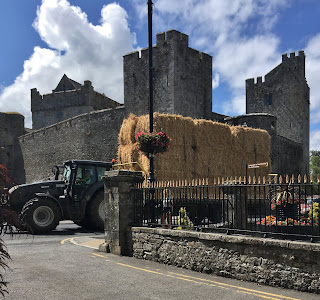 |
| The Busy Streets Of Cahir |
Cahir is an ancient Irish town, and the name derives from "Cathair" which means "stone ring fort." The name is pronounced "care," but we had no idea and called it "KA-here" until I asked someone. Today Cahir is a pretty little market town with a big castle smack in the middle of it. One of the biggest castles in Ireland, it sits on an island in the River Suir and has several white swans swimming leisurely around in front of it. The castle was built in two parts, the first on the site of a stone ring fort in 1142 by one of the O'Brien clan descending from The High King of Ireland. Cahir Castle was then expanded and gifted to the Butler family in 1375 by King Edward III of England. The Butlers became the Earls of Cahir in 1542, and for hundreds of years, Cahir castle remained in the Butler family. Hey wait; are these the SAME Butlers that owned Hore Abbey? Yes-they owned everything (including the Castle in Kilkenny)!
Cahir has so many good pubs to choose from it was ridiculous! Now that the sun was out, we decided to skip the pub this lunch, and settled on a fresh food cafe across the street from Cahir castle called The River House Cafe. A large variety of salads, sandwiches made on order, traditional Irish hot lunches and tempting desserts; this cafe had everything we wanted to eat, plus a patio where we could soak up the sun and admire the views of the castle.
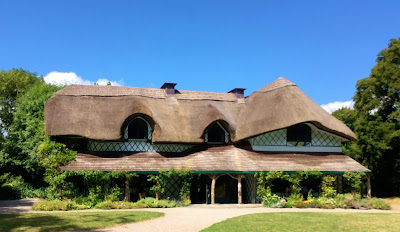 |
| The Swiss Cottage |
 |
| Mimicking Natures Design |
After lunch, we walked around town and kept seeing signs for "The Swiss Cottage." It was listed on my OPW brochure as a heritage site, so we decided to go check it out. The Swiss cottage was just a 5-minute drive out of Cahir along the R670 or a 2km walk from Cahir Castle. Following the tourist signs down a pretty tree-lined lane, you come to a shaded parking lot, and a footpath leads you through the forest and across a bridge over the River Suir. Liam decided to have a nap in the car, while "the olds" went to check out the cottage. A tunnel built straight into the hillside leads you to the entrance of the Swiss Cottage. This was once the servant's entrance to the house, and the kitchen area is now the OPW office where the cottage tour begins.
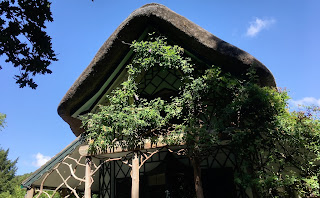 |
| Swiss Cottage Balcony |

The Swiss Cottage is a name the locals gave to the Cottage owned by the Butlers as a country getaway from the castle. This house was built in 1810 and is a "cottage orné" or an ornamental cottage like Marie Antoinette's "petit hameau" at Versailles. A free 40 minute guided tour of this fully restored thatch cottage is included in the price of admission (€5, or free with your Heritage Card) and is a great way to spend an hour.
 |
| 1,000 Year Old Yew Tree |
This small cottage was so unique; mimicking natural design with supporting beams carved like tree trunks, furniture carved by hand to look like tree branches, custom wallpaper from Paris and no two windows in the entire cottage are alike! The Swiss Cottage fell into disrepair when the last Duke of Cahir spent the Butler fortune and died without any children. The cottage fell into ruin, was covered with brambles and even a local farmers' horse was squatting in the house! Some local residents feared for this historic building and started to clean it up. A Canadian Woman bought the Swiss Cottage in the 1980s with the intention of renovating it (there is no kitchen or washrooms in the cottage), but she fell ill and had to return to Canada. The Swiss Cottage luckily fell into the hands of the local historical society and is now fully restored and run by the OPW.
There are no formal gardens at the Swiss Cottage, but there is an ancient Yew tree at the side of the house that was thought to be planted by monks 1,000 years ago when this was rumoured to be the site of an early Celtic/Christian monastery. Here was another example of Irish monasteries and yew trees mentioned together; now my interest was peaking. What was the connection?
 |
| View From Vee Gap |
 We needed to get moving to Cobh to check into our next Airbnb before the dinner hour, so we set a direct route on our Garmin GPS unit; Sangeeta. We continued along on Regional Road 668, and as soon as we passed a village called Clogheen, the road began to twist and wind it's way up the mountainside in repeated hairpin turns rising above the farmer's fields and church steeples. We didn't know it at the time, but we were on a scenic route through the 'Vee Gap' in the Knockmealdown Mountains and entering County Waterford.
We needed to get moving to Cobh to check into our next Airbnb before the dinner hour, so we set a direct route on our Garmin GPS unit; Sangeeta. We continued along on Regional Road 668, and as soon as we passed a village called Clogheen, the road began to twist and wind it's way up the mountainside in repeated hairpin turns rising above the farmer's fields and church steeples. We didn't know it at the time, but we were on a scenic route through the 'Vee Gap' in the Knockmealdown Mountains and entering County Waterford. |
| Knockmealdown Summit |
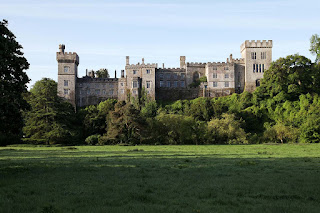 |
| Lismore Castle |

Eventually, we arrived at our little Airbnb house overlooking the harbour town of Cobh. The view was magnificent, and we could smell the salt air of the ocean on the wind. We spent some time lounging on the deck in the sunshine having a delicious Irish beer and reflecting on all the places we had discovered that day. Ireland's East has so much to discover!
Have you found some off-the-beaten-path places in Ireland's Ancient East? I would love to hear about it in the comments below!
Follow me on FACEBOOK, INSTAGRAM and BLOGLOVIN' for daily photos and updates! #slowtravel🐌 #dulgomall
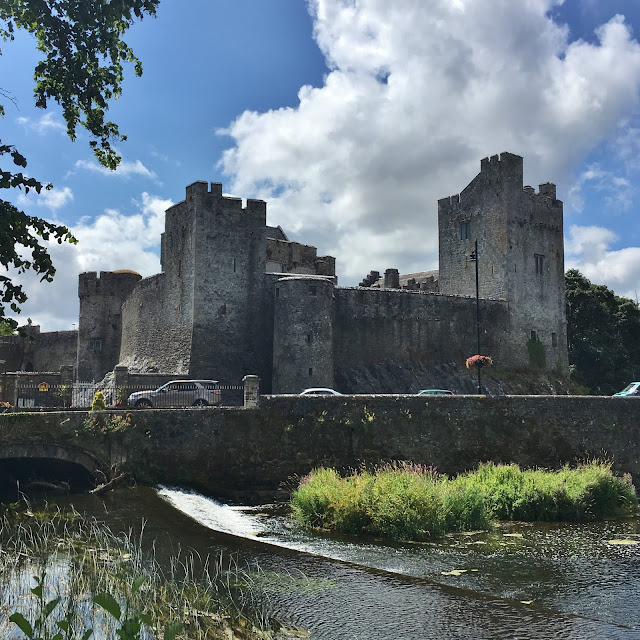


No comments:
Post a Comment